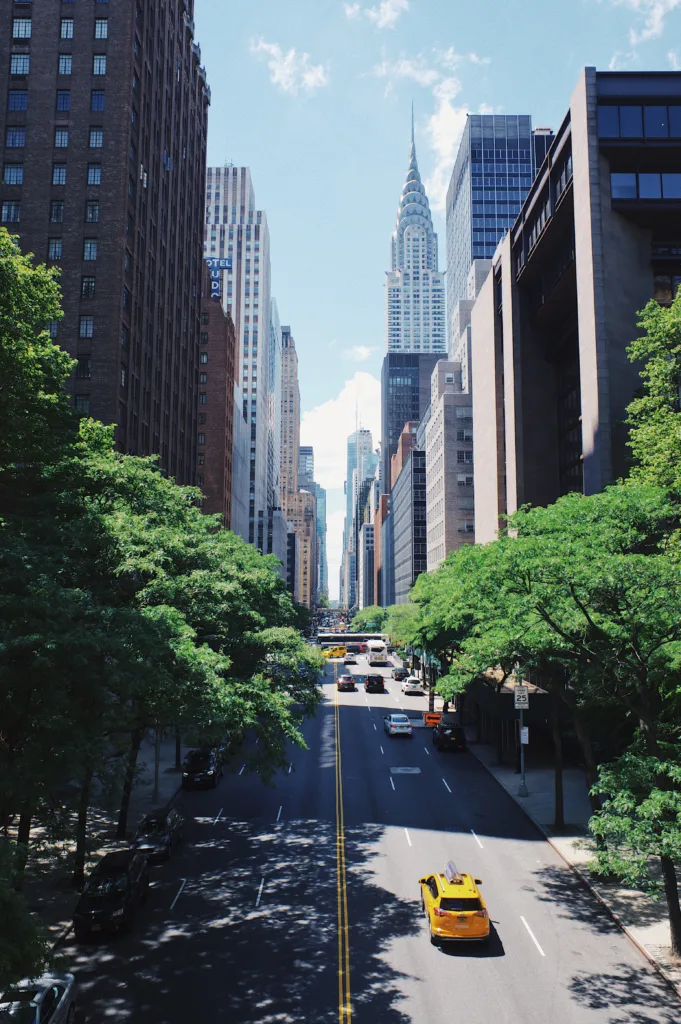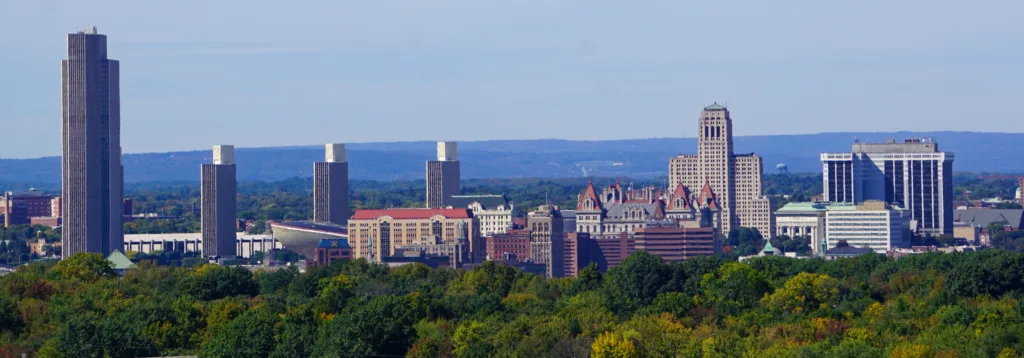When it comes to defining Upstate New York, opinions may vary. It’s a term often tossed around in conversations, but what exactly does it encompass? Is it a specific region or a relative concept? Let’s delve into the depths of Upstate New York and attempt to unravel its true meaning.
Geographically speaking, Upstate New York refers to the northern portion of the state, excluding New York City. However, the exact boundaries can be subjective, leading to differing interpretations. To shed some light on this topic, let’s explore various perspectives.
From an historical standpoint, Upstate New York has been associated with major cities such as Albany, Utica, Binghamton, Syracuse, Rochester, and Buffalo. These cities, spanning from east to west, are often considered the core of Upstate. However, opinions may differ on which cities are included or excluded.
In the book “The Spirit of New York: Defining Events in the Empire State’s History,” author Bruce Dearstyne offers an intriguing perspective. According to Dearstyne, Westchester and Putnam counties, located just north of New York City, can also be considered part of Upstate. This expands the boundaries of Upstate beyond the traditional definition.
Interestingly, Dearstyne also mentions that some individuals believe Long Island is part of Upstate. However, this notion is not widely accepted. To establish a more concrete boundary, let’s turn to the concept of commuting.
A commonly used benchmark is the northernmost point of the Metro-North Railroad’s Hudson line, which terminates in Poughkeepsie. If you can easily commute to New York City from your location, you are not considered to be in Upstate. Therefore, the demarcation between Upstate and the rest of New York lies north of Poughkeepsie.
Another definition of Upstate, as found in official dictionaries, refers to the northern part or sections of a state. This definition supports the idea that Upstate is relative to one’s current location. Whatever lies north of you can be considered Upstate.
To summarize, the term Upstate New York can be defined as the northern portion of the state, excluding New York City. It includes major cities such as Albany, Utica, Binghamton, Syracuse, Rochester, and Buffalo. However, there are differing opinions on the specific boundaries, with some considering Westchester and Putnam counties as part of Upstate. Long Island, on the other hand, is generally not included. The northernmost point of the Metro-North Railroad’s Hudson line, where commuting to New York City becomes less feasible, is often used as a benchmark. Ultimately, Upstate is a relative concept, varying depending on one’s location.
So, next time you find yourself discussing Upstate New York, remember that its definition is not set in stone. The boundaries can be fluid, and perspectives may differ. Embrace the subjectivity and engage in lively debates on what truly constitutes Upstate New York.
What Cities Are Included In Upstate New York?
Upstate New York encompasses several major cities from east to west. These cities include:
1. Albany: The capital of New York State, located on the Hudson River. Known for its historic architecture, Albany is a cultural and economic hub in the region.
2. Utica: Situated in the Mohawk Valley, Utica is a city with a rich history and diverse population. It is known for its manufacturing and healthcare industries.
3. Binghamton: Located in the southern tier region of New York, Binghamton is a city known for its educational institutions, such as Binghamton University. It is also a center for technology and manufacturing.
4. Syracuse: Situated in central New York, Syracuse is a major city known for its universities, such as Syracuse University. It is also a hub for healthcare, education, and research.
5. Rochester: Located on the southern shore of Lake Ontario, Rochester is a city with a strong industrial and technological presence. It is known for its high-quality education and healthcare institutions.
6. Buffalo: Situated near the border with Canada, Buffalo is the second-largest city in New York State. It is known for its vibrant arts scene, sports teams, and proximity to Niagara Falls.
These cities in Upstate New York offer a range of opportunities and attractions, making the region a diverse and thriving part of the state.

What Classifies As Upstate New York?
Upstate New York can be defined as the region located north of New York City. However, the exact boundaries can vary depending on different perspectives and interpretations. Generally, Upstate New York includes counties such as Westchester and Putnam, which are considered part of the region despite being relatively close to the city. Additionally, Long Island is often excluded from the definition of Upstate New York, as it is geographically separated from the rest of the state.
To provide a more comprehensive understanding, here are some key points that help classify an area as Upstate New York:
1. Geographic Location: Upstate New York is geographically situated in the northern part of the state, away from the densely populated New York City metropolitan area. It encompasses a significant portion of the state’s landmass.
2. Population Density: Upstate New York is characterized by a lower population density compared to the metropolitan areas of New York City. The region is known for its smaller cities, towns, and rural areas.
3. Natural Landscape: Upstate New York is renowned for its picturesque landscapes, including the Adirondack and Catskill Mountains, Finger Lakes, Hudson Valley, and various other scenic areas. The region offers abundant natural beauty and outdoor recreational opportunities.
4. Economic and Cultural Differences: Upstate New York has distinct economic and cultural characteristics that set it apart from the urbanized downstate region. It has a more diverse economy, with industries such as agriculture, manufacturing, tourism, and higher education playing significant roles.
5. Political Considerations: Upstate New York often has different political leanings compared to the downstate area. The region has historically exhibited different voting patterns and policy preferences, leading to a somewhat separate political identity.
It is important to note that the definition of Upstate New York can be subjective, and there may be variations in how individuals perceive its boundaries. The classification of specific counties or cities as upstate or downstate can differ depending on personal opinions, historical context, or cultural affiliations.
Where Does NY Upstate Start?
Upstate New York is generally considered to begin north of Poughkeepsie, where the Hudson line of the Metro-North Railroad ends. This demarcation point is commonly used because it signifies the northernmost extent of the commuter rail network that connects the city with its surrounding suburbs. Beyond this point, the region is characterized by a more rural and less densely populated landscape.
To provide a clearer understanding, here are some key points about where upstate New York starts:
1. Geographical Boundary: Upstate New York is situated in the northern part of the state, covering a substantial portion of the land area. It is bordered by the Hudson River to the east, the Canadian border to the north, the Pennsylvania border to the south, and the Great Lakes to the west.
2. Distinct Cultural and Economic Differences: Upstate New York is known for its distinct cultural and economic characteristics that set it apart from the New York City metropolitan area. The region is often associated with industries such as agriculture, manufacturing, and tourism, while the city is renowned for its financial, media, and entertainment sectors.
3. Varying Definitions and Perspectives: While the Poughkeepsie cutoff is a commonly accepted boundary, it’s worth noting that different people may have varying opinions on where upstate New York starts. Some might argue for a more northern or western starting point, while others may consider areas closer to the city as part of the upstate region.
4. Counties and Cities: Upstate New York includes various counties and cities, such as Albany, Buffalo, Rochester, Syracuse, and the Capital District. These areas are often referred to as major hubs within the upstate region.
5. Natural Beauty and Outdoor Recreational Opportunities: Upstate New York is renowned for its picturesque landscapes, including the Adirondack and Catskill Mountains, Finger Lakes region, and the Thousand Islands. These areas offer abundant opportunities for outdoor activities like hiking, boating, skiing, and fishing.
It’s important to note that the definition of upstate New York can vary depending on the context and the perspective of the person you ask. However, the general consensus places the starting point north of Poughkeepsie, marking the transition from the densely populated metropolitan area to the more rural and scenic regions of upstate New York.
Why Do They Call It Upstate?
The term “Upstate” is commonly used to refer to the northern part of a state. The reason it is called “upstate” is because it is geographically located north of a specific point, often a major city or metropolitan area. The usage of the term “upstate” implies a sense of direction or position, indicating that the mentioned area is located above or higher up than the point of reference.
Here are a few reasons why the term “upstate” is used:
1. Geographical Location: The term “upstate” is used to describe regions that are located in the northern or upper part of a state. It helps to differentiate these areas from the southern or central parts of the state. The specific dividing line between upstate and other regions can vary depending on the state and its geography.
2. Relative Direction: “Upstate” is a relative term that depends on where you are standing or the perspective of the speaker. If you are in a specific city or region, anything located to the north of that point can be referred to as “upstate.” This allows for a clear and concise way to describe areas that are situated further away from the main urban centers.
3. Historical Usage: The term “upstate” has been in use for many years and has become ingrained in the local vernacular of certain regions. It has been traditionally used to describe the rural, less densely populated areas of a state, which are often located in the northern part. Over time, this usage has become widely accepted and recognized by the general population.
4. Cultural and Economic Differences: The term “upstate” also carries connotations of distinct cultural and economic characteristics. Upstate regions are often associated with a slower pace of life, more rural landscapes, and industries such as agriculture, manufacturing, or tourism. This differentiation helps to highlight the unique qualities and attributes of these areas compared to the more urbanized and developed parts of the state.
The term “upstate” is used to describe the northern or upper regions of a state. It provides a convenient way to refer to areas that are located above or higher up from a specific point of reference. The usage of this term has historical, geographical, and cultural reasons, and it helps to distinguish these areas from the more populated and urbanized parts of the state.

Conclusion
Upstate New York is a region that encompasses major cities such as Albany, Utica, Binghamton, Syracuse, Rochester, and Buffalo. It is generally defined as anything north of New York City, although the exact boundaries may vary depending on who you ask. While some may argue that Westchester and Putnam counties are part of Upstate, most people consider anything north of Poughkeepsie to be Upstate.
The term “Upstate” is often used to refer to the northern part or sections of a state. It is a relative term, meaning that what is considered Upstate depends on where you are standing. For example, if you are in Albany, anything north of Albany would be considered Upstate. However, if you are in Buffalo, anything north of Buffalo would be considered Upstate.
Upstate New York is a diverse region with its own unique culture, history, and attractions. From the scenic beauty of the Adirondack Mountains to the bustling city life of Rochester and Buffalo, Upstate offers something for everyone. Whether you’re interested in outdoor activities, cultural experiences, or culinary delights, Upstate New York has it all. So, if you’re looking to explore a different side of the Empire State, venture north and discover the wonders of Upstate.
